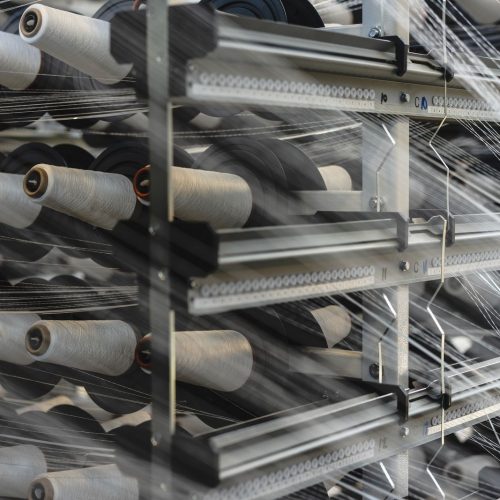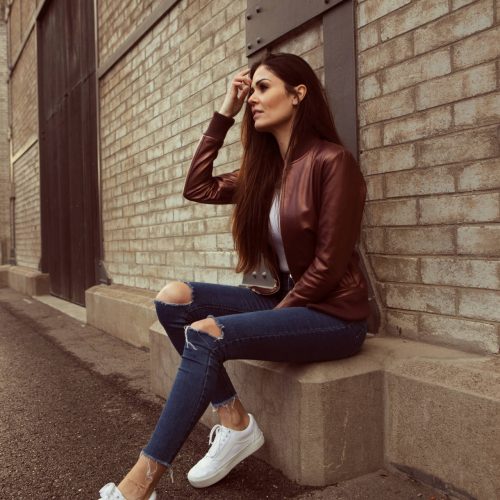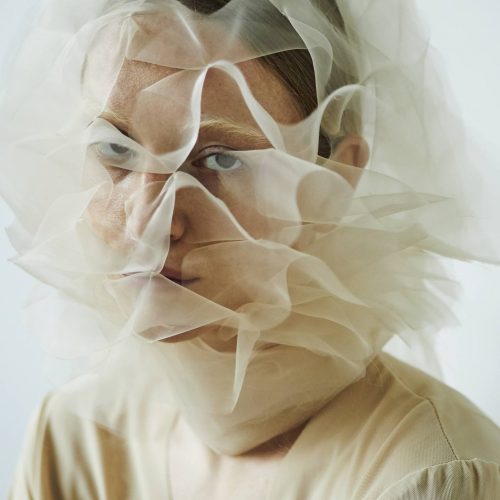Fair Trade Jewelry: Navigating the trade with today’s fair jewellery makers
Ever wondered where your clothes come from? But jewels? Amid the noise telling us to green up our closets, it’s easy to forget the origin story of our precious jewels which can also be fraught with faint ethical issues. The use of child labour, lack of traceability and hazardous health and safety measures are one of the most common risks concerning the jewellery industry today, but no one ever talks about it. There’s nothing better than shining in the light of gold and diamonds, but tracking up the inheritance of these precious gems could not be less glamourous. Here comes a tipping point: a handful of brave brands have battered the issue with ambiguity by vigorously dwelling into jewellery art imbued with a kinder meaning. These multi-dimensional makers prove that it is possible to passionately pursue the jewellery craft conflict-free. With bearing a galore of environmental benevolence in mind, the brave designers are now polishing the alluring, enigmatic symbolism of our treasured talismans to highly ethical standards.
We investigate the locus of bias surrounding the jewellery industry masked behind the frivolous façade of glamour, and traces what can be done to trigger the domino effect evoking tangible rather than rhetorical change in the industry with some of today’s contemporary kind jewellery crafters.
The Ugly Underbelly
"Good Morning! This ain't Vietnam. Still, people lose hands, legs, arms for real. Little was known of Sierra Leone, and how it connect to the diamonds we own" goes the infamous line from Kanye West’s Grammy-winning song ‘Diamonds from Sierra Leone’, bringing light to the grim underbelly of diamond mining in the country once threaded for its illegal diamond trade.
Public awareness around the origins of jewellery began in the late 1990s when a few NGOs started to rumor about the conflict linked to some diamonds. Ever since, active legislative bodies, such as The Kimberley Process (KP), have taken action to stop the flow of conflict diamonds that are used by rebel movements to finance wars against legitimate governments. In reality, it often takes the intervention of popular culture to bring these issues, largely overshadowed by the glitz and glamour of the mainstream jewellery industry, into public discussion.“With the large jewellery brands dominating the press with the glamour of big budget campaigns, the issues are easily drowned out by the aspirational images. It often takes a big news story such as Rana Plaza, or Hollywood film like ‘Blood Diamonds’, to bring the issues to the fore,” highlights a representative at the fair-forward Cred Jewellery, based in London.
A survey conducted by Cred Jewellery concluded that only 16% of people are aware of fairtrade metals, as opposed to 64% who are familiar with fairtrade tea and coffee. Yet 56% considers buying fairtrade products a responsible act. “Jewellery is far behind other sectors in embracing ethics and sourcing. Consumers have been demanding transparency in fresh produce, beauty and fashion for years,” adds the Cred Jewellery spokesperson.
Tansy Haak, founder of London-based KIND Jewellery, admits that sometimes it takes a ground-shaking catastrophe for the public to raise their heads and start paying attention. “Last month’s gold mine collapse in Afghanistan which killed 30 people was a stark reminder that not all mining operations have their workers best interests at heart,” she says.
Here Comes the Reality Check
The lack of traceability of the stones and hard metals is another major pain point — no one knows where they come from, there is no serious accreditation or knowledge about supply chain management. “Today, there is more traceability on a £10 bunch of roses from Sainsbury’s than a £5,000 diamond ring from virtually any jeweller’s. Artisanal miners are working for $1 a day using child labour in dangerous conditions…, any other situation like this would be an outrage”, explains another industry insider.
There are currently 16 million small scale gold miners and further 100 million people who indirectly rely on artisanal and small-scale mining for a living, producing between 200-300 tons of gold per year, but they’re not protected due to the monopolisation of large-scale miners. Fairtrade Gold, a part of the Fairtrade Foundation encouraging the proliferation of fair gold and silver, has taken action to halt the hazardous health and safety measures, and raise awareness of the lucrative issues facing the jewellery industry today. According to Fairtrade Gold’s initiative, they aim to seek ‘transparency, traceability, truth and justice’ as to what concerns the livelihoods of the millions of artisanal and small-scale miners (ASM’s) across the world. The Fairtrade mark ensures the prohibition of child labour, guarantees fair rights to the miners, as well as constant supervision of working conditions, to name a few.
In the ASM’s, mainly found in South America (SOTRAMI and AURELSA in Peru), but also in parts of East Africa (Tanzania, Kenya and Uganda), one of the most severe risks is brought about due to the workers’ daily contact with toxic chemicals, such as mercury, cyanide and nitric acid, causing food contamination, nervous system damage and muscular tremors. Specific pacts and regulations, however, like the Minamata Convention on Mercury issued by World Health Organization (WHO), aim “to protect human health and the environment from anthropogenic emissions and releases of mercury and mercury compounds”.
A Fairtrade International Project Manager for Gold and Precious Metals Programme confirms that its superlative aim is to stop the various risks imposed on workers beyond exposure to chemicals. “Fairtrade gold supports miners to eliminate child labour, work their way out of the vicious circle of exploitation and poverty and reduce the harmful impacts of mercury. Fairtrade hopes to now engage with gold in the same way it has with tea, coffee and bananas,” claims the spokesperson.
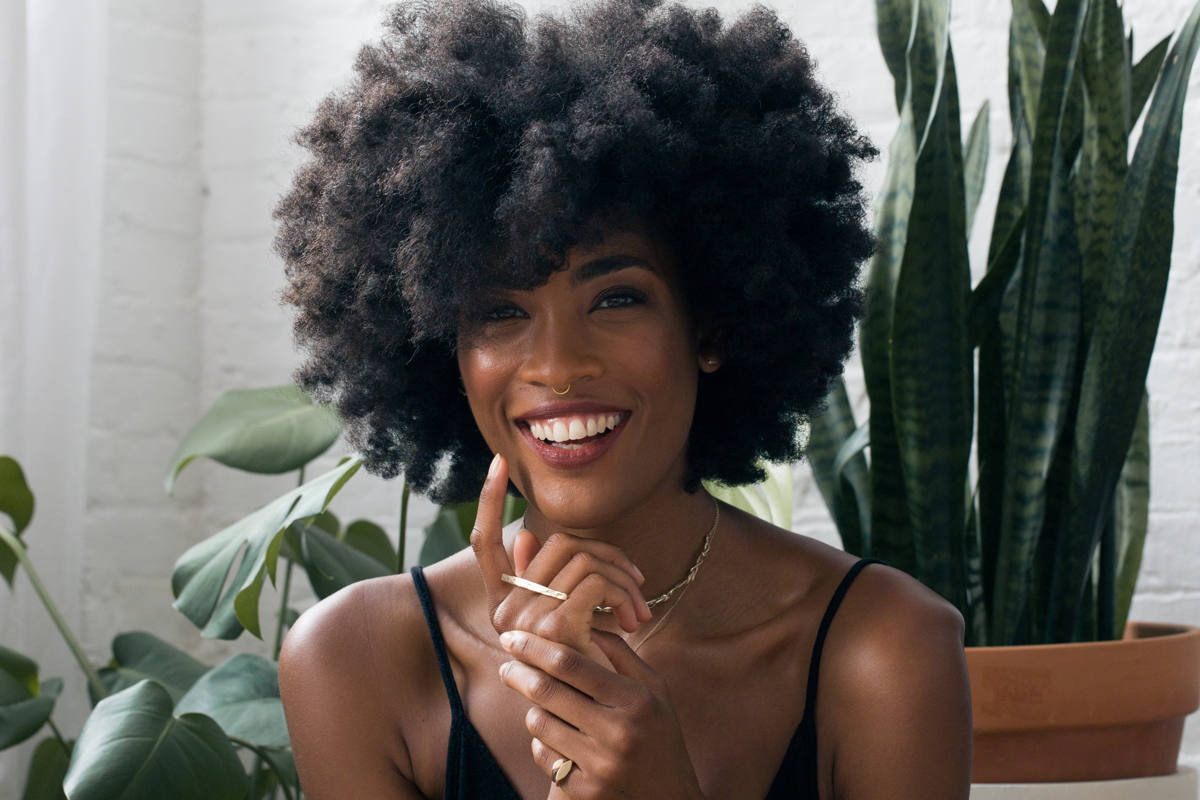
Vanessa Lianne
Fighting Back with Kindness
Responsible jewellery makers stand on the other edge of the scale to balance out the orthodox operational policies, bringing no sub-par results with focus on kindness. Instead of standing by bewildered, conscious makers have internalised the perils of the industry from the bird’s-eye view — the undermining effects of forgery and the industry’s devastating burden on the environment, and are now taking action to fight back, imbuing their take on the precious jewellery art with significant symbolism. Some designers, like Naida C. Castel, are fighting against the odds with an imaginative mind materialising through meaningful authenticity. The Spanish jewellery designer has set her eponymous brand forming honest jewellery in her studio in Barcelona to contribute to the industry in a more see-through way, and considers transparency and a mindful moral codex the main parameters of a trustable, quality-controlled standard. The creator's curious collections, like Mujō (‘impermanence’ in Japanese), prove that weaving a truthful story through toying with the boundaries of the jewels’ functionality and visual appeal is a powerful weapon. Her iconic, often unruly geometrical shapes are adorned with pompous, aesthetically refined nuances and bound to resonate with the mundane everyday life, but their aim is to display the honesty of the material and its process, creating a free flow of interpretation, without compromising that final gravity of fairness. “It is very important to me that all my pieces are fairly made by hand, with the craftsmanship of jewellers that are properly paid and local,” says the mindful maker.
While staying susceptible to change plays a pivotal role in the makers’ collective consciousness, what also forms the quintessential basis for responsible jewellery makers’ modus operandi is their synchronic movement against the ephemeral fragility and fast-paced tide of trends. These skilled artists, on the other hand, cherish the element of timelessness being subtly transformed into more durable pieces — an ethos that revolves around making sure the beautiful jewels do not use value or relevance in time runs through the creative blood of the change-makers. London-based KIND jewellery encourages to cherish individuality that comes with a masterful hands-on approach. The brand was launched after the founders’ wild, wandering adventure through Europe, India and Sri Lanka, and features a line of captivating statement pieces which will be treasured and become weaved into the lives and stories of the people who wear them. “KIND Jewellery is using responsibly sourced precious metals and champions slow fashion by rejecting the concept of seasons and trends. The overarching goal is to create a line which will be worn day in day out long into the future,” says Tansy Haak, founder of KIND Jewellery handmade in London. According to Naida C. Castel, eternity also plays a huge role in defining a jewel’s worth, so that they almost become a mesmerising second skin. “[Jewellery should have the quality to] become embroidered into the wearers’ lives — something you wear as an extension of yourself and you keep forever. I make functional jewels to last. I would like to keep pushing the philosophy of slow making and giving value to the the jewels I make, for the people that care about this and want a piece that speaks to them,” says the designer.
Conscious artist Vanessa Lianne pays homage to sustainability as well as an eternal appreciation of beauty in her carefully curated line of ‘delicate armor’. Vanessa Lianne has set high standards for craftsmanship and emphasises a greater degree of mindfulness, making the wearer more connected to her edgy, outstanding jewellery art saturated with a generous message. The jewellery maker hand-forges each unique piece of jewellery by hand in her Brooklyn studio. Yet the primary role of her line of work is to keep offering aesthetic appeal — her no-ordinary signature textures and palpable craftsmanship infuse the collection with heritage; so her pieces become an inseparable, native extension of the woman who wears them. The values that flow through Vanessa Lianne’s brand also manifest in the heritage factor, as well as traceable origins of materials. “I make jewellery that is meant to be future heirlooms loved and past down for generations,” she explains.
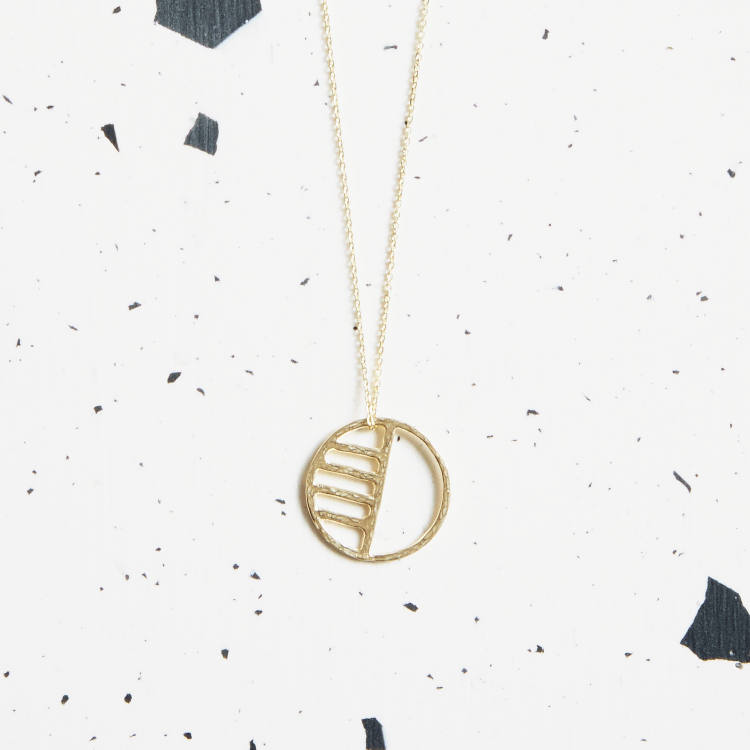
KIND Jewellery
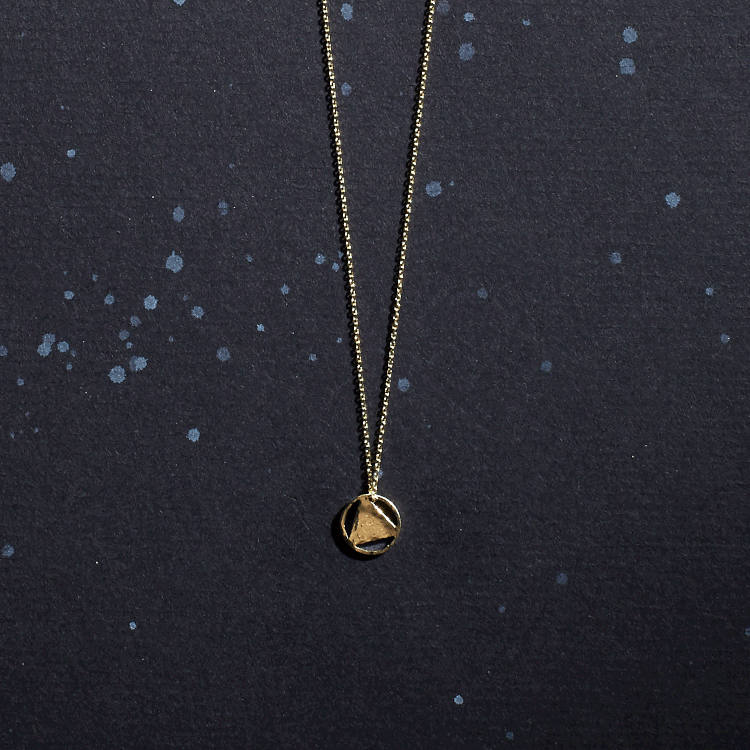
KIND Jewellery
Making Meaning Matter
Against the Tides of Trend Conflict-Free
However, before the ethical jewellery industry could blossom towards boom, a row of pragmatic challenges must be tackled. When discussing the concerns of the influential independent jewellery makers today, Naida postulates that the speed of production and overwhelming pressure to keep up with the fashion world still forms a paradigm in the industry and stays as a practical concern to the smaller makers. “The most difficult might be to follow up with this dizzying speed of consumption nowadays,” Naida brings out, marking a logic gap between expectations and reality when trying to make the industry more democratic. “Not only about the production, but the content, quality and quantity of new and different images that customers are expecting to see every day is insane. Sometimes people are asking the same volume from a small brand than big multinational companies and it is impossible to compete,” highlights the jewellery maker. Monopolisation and lack of funding for going big on ADs are pivotal issues hindering the independent artists. Whereas smaller brands might not be as up to date with putting up the awe-inspiring visual show in the form of high-scale marketing campaigns passing in the speed of light, on the other hand, what they can bring to the table is an added value of authenticity to combat the challenge of being overridden by the market’s highly-saturated commercial noise. “It would be good if we slow down and take the time to see the difference. It is hard to run a small business, but in the end it’s worth pushing [to break through], because what I want to offer is something authentic. Something from my soul to yours.”
The makers are still far from reaping the benefits of their role and celebrating a viable victory. When reflecting on the challenges campaigning for a good cause brings to the fore, they highlight ambiguity that could be attributed to the spirit of our times.
Vanessa brings out that the stable, monotonous days are long gone: what remains is a trade governed by market fluctuations and growing competition, but drop in competence, which means that striving in the industry remains forever a learning curve. Makers have to keep up with other shifts in consumer trends and clients’ demands beyond the actual practical science behind the artistry of jewellery making. “The jewellery industry has vastly changed over the last few years. There is way more competition than ever before and you have to be savvy at many other things other than making jewellery.” But the designer admits consumers still often have a final say in making kindness matter and the treasured fair-trade more ubiquitous. “As consumers, you have the power to put your money where your values are. If you believe in the environment, sustainability and want jewellery that you feel really good about, then it is important you keep supporting the independent designers that are committed and aligned with your values. The more support and bigger they are, the more ability and strength they have to put pressure on supplies for traceability and to make change,” advises Vanessa.
Another grim issue lies in the fact that, paradoxically, we still have to highlight the sharp empirical difference between ethical jewellery and just jewellery. “My hope is that soon within jewellery, ethical sourcing and sustainability will not be a differentiator anymore, because they will be expected and commonplace", says Vanessa. However, it's safe to say change is in the air: the additional pressure imposed by consumers and makers alike thanks to the growing transparency has had an overall positive effect on the industry and its impact, making suppliers having to actually go that extra mile. “This pressure and interest directly affects the supply chain. Years ago, when I would press suppliers on traceability and ask many questions they would roll their eyes or be annoyed. Now, it’s a much easier conversation to have, and even some of the biggest companies within the industry are talking about ethical sourcing and sustainability,” she proudly points out the optimistic trend following the transparency path.
Materials: The Mindful Manifesto
When it comes to making a statement with the most sustainable materials, the fair-forward jewellery artists' preference does differ a great deal, yet form often follows function. Naida C. Castel’s pronounced jewels are designed and made with care, using traditional quality-oriented materials, such as gold and silver, but also a melange of raw crystals and gemstones. She has also put thought into recycling metals and creating less waste at the production studio. Being mindful of the end consumer, Naida again approaches functionality paired with meticulous research before carefully curating her abstract, show-stopper collections. “I work with 926 sterling silver and 18 carats gold. I found out about allergies and these two materials are safe for most of people. I try to keep them clean — I usually plate silver with 18k gold or make pieces in white gold. I source them from local providers and I also recycle and refine my own or some clients metals, so nothing goes to waste,” claims Naida.
Similarly, Tansy has shifted the focus on locality and trusted fair-trade resources. “KIND jewellery is made using recycled silver, 9-carat yellow gold and 9-carat rose gold. We support fair-trade gold and wherever 100% recycled metal isn’t available and use suppliers who are audited by the Responsible Jewellers Council. All our current suppliers are based in the UK which enables us to build long-lasting relationships with them,” says Tansy, optimistically adding that the availability of fair materials does not hinder one’s creative boundaries: “Sourcing ethically and environmentally sound materials is an ongoing process. The brand is constantly evolving, as I learn more and explore new and exciting ways of working,” tells the founder.
To Vanessa, traceability and trust are the key factors linking to her choice of materials, enabling to ensure uncompromising, premium-range quality that does not come with negative repercussions. She also always uses recycled materials whenever possible, but highlights the importance of traceability that loops back to trust. “I have a long-standing relationship with my casting company and their precious metal suppliers to ensure it is certified 100% recycled. So much of the jewellery industry is based on trust. Over the years, I have cultivated strong relationship with stone dealers, suppliers and crafts people. I only work with dealers that source stones conflict free and as ethically as possible,” assures Vanessa. When asked about the particular materials the talented jeweller works with, she brings out using Montana sapphires that come from the USA, as well as reclaimed and antique stones. She also only works with suppliers that are able to provide traceability of origin and avoid dubious operational policies. “Using recycled stones is a great way to avoid using stones that are untraceable. The more popular this becomes, the more pressure there will be for stone dealers and miners to keep account of where stones come from and their journey,” Vanessa claims. “I spend a lot of time learning, researching, talking and creating relationships, so that I can make jewellery that reflects the most honest values,” says the honest maker.
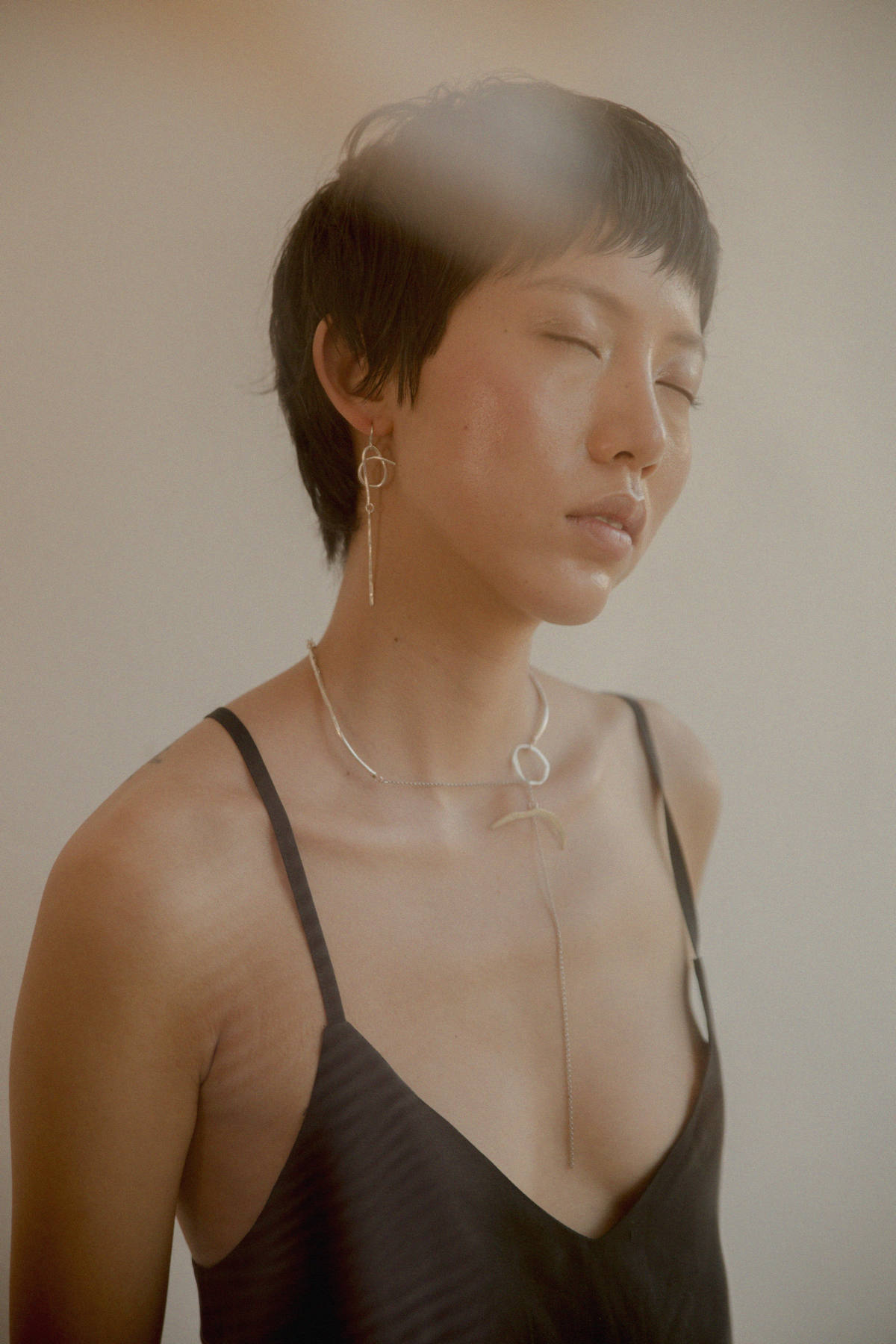
Naida Castel
Cornucopia of Ethical Concerns
When again digging deeper in the spectrum of ethical concerns informing one’s professional background, what sparked Vanessa’s special interest to become intertwined with ethical issues in the industry? For Vanessa, from staggering pain grew out the flaming passion. “While I was studying jewellery, I also learned more about the destruction the jewellery industry can cause to the environment and to people’s lives. This is over 10 years ago, but I was crushed. I then did a lot of research into responsible and ethical jewellery practices and how mining effects our environment," Vanessa explains. "It was very important to me that I would always make jewellery that I could feel good and proud of. I made a commitment then that I would always do my utmost to make sure the jewellery I created was as ethically sustainable and as environmentally responsible as possible,” she enthuses.
Vanessa’s deeply-held dedication to make jewellery more conflict-free goes beyond regular office hours, remaining an impalpable prerequisite for success and satisfaction throughout her mission. And it does take an untamable dose of grit not to stay so down-to-earth — Vanessa does not fight back with raucous rationalism, but her dreams are fleetingly geared toward higher altitudes beyond grounded, pragmatic limits. “I also made the commitment to keep learning about ways to promote sustainability and ethical practices by asking questions, pushing suppliers to take it seriously and be more transparent, and by using my role to educate my customers, suppliers and fellow jewellers,” the artist takes pride in operating on the fuel of personal proactiveness.
KIND jewellery surely delivers as generous promises as it has set out in its mission statement — on top of its idealistic ideology to impose only a minimal effect on the environment, it also believes in the rewarding power of giving back. “Our bench-marks are to make informed decisions when sourcing materials, and to reuse and recycle every last scrap of metal, paper and packaging that arrives in the studio. We also off-set our carbon footprint by regular donations to The Woodlands Trust and aim to get to know the suppliers we work with thoroughly — by asking them questions and visiting their workshops and mines.” An unbending personal connection with the supply chain is also paramount to the change-making label. “For me the most important concern is for the welfare of the people at the beginning of the supply chain. This is why our new collection of Engagement Rings will be made using Sapphires sourced from a Sri Lankan mine which we are visiting this month,” reflects Tansy.
Taking Pride in Personalisation
It looks like the omnipresence of the highly-regarded modern virtual shopping platforms does give us the buzz (albeit implicit), but doing business online does not change the customers’ pursuit of curiosity: the carefully curated cyber storyboard does not subsidise some universal values, like our longing for truth. Yet, can the seemingly shiny wrapping paper of integrity presented in the vibrant digital realm truly replace a more dynamic real-life experience and fully correspond to today’s conscious consumers’ growing interest in transparency?
Tansy believes that introducing the online medium does not compromise the buyers’ trust even when going KIND, and there’s something appeasing to every taste. She adds that selling online could still be tied with a more personal approach, giving chance for customers to provide active feedback, and nothing is off-limits when it comes to pleasing customers, like arranging a meeting in person for niche signature pieces. “I still endeavour to provide customers with a really personal service. When customers contact the brand, it is me that responds to their questions and I am always happy to make adjustments to pieces and meet up to discuss bespoke projects or wedding ring designs. That one-to-one contact is one of my favourite parts of the job, creating something they adore or seeing them wearing a piece from the collection make me feel proud,” she ruminates on the issue with personalisation.
Naida C. Castel believes that honesty is still key, whatever the medium, and aims to cater for the wise, truth-seeking buyers consuming through their stagnant screens. So how we can make sure the postcard-pretty, glossy jewels actually match our expectations when ordered through a few lazy clicks? “As a jewellery designer, I try to make it easy for people, to show exactly what they are buying. I like to show the honesty of the materials and the process.” She believes some responsibility also relies on the customer who should feel ready to contribute to change due to the wide availability of information and vote with their wallet. “Some people are already aware of the meaning of a good quality piece rather than a mass production one. Something has to change in our minds and our consumption habits. The change is within us,” she reflects.
That it all comes down to the personal values of the customer is a belief that has also been internalised by Vanessa. ”The consumer has a lot of power and it is very important how they use it,” she suggests. “I have seen exciting changes within the jewellery industry as consumers apply more pressure for sustainability and transparency”. On another note, when discussing the pros and cons of online and offline shopping — with online presence leaving out a physical experience enabling the wearer to establish a personal connection with the jewels on virtual display, how to then make buying jewellery more personal again without the trusted jury of the touch and wilful witness of the eye? On the one hand, nothing can beat the online medium as it predominantly allows a wider, global reach. “I sell jewelry all over the world and I am humbled by the reach. I try to create a really personal online experience especially for custom pieces. To add, I offer one on one phone consultations, video conferencing to discuss their needs and show them stone options. I also use my social media as tool for customers to get to know me and see behind the scenes of running an independent jewellery company,” Vanessa reveals her influential marketing agenda.
Although the online medium supports Vanessa’s benign, global outlook surpassing the expectations of a mere physical store and allows targeting a wider net of loyal audiences, Vanessa still tries her best to cater for those after a more intimate experience: the handful of followers more affectionate about a very personal, off-the-grid approach. “I also host an offline mantra building workshop called Wear Your Mantra. This is an intimate workshop that helps customers discover their personal mantra through guided visitation. It is also a beautiful way to build and create community. The custom mantra is then engraved on a custom signet ring. Jewellery is so personal and I think touching it and holding it is irreplaceable.”

Locus of Quality Control
How can we then be truly sure the jewellery we buy is durable and has passed the necessary quality control past negative connotations? “By always making sure where you buy, and doing your homework about the brand. I can’t really talk for other brands, but for sure by reading about it or sourcing more information from the people behind it,” Naida projects. “If they are not hiding anything, you will see it, and it will definitely stand out when you see a piece.”
When it comes to the quality-assuring parameters we should always consider to revise the jewels’ origins pre-purchase, Tansy Haak also suggests to put more emphasis on doing your research first, although the origin stamp of materials already reveals a great deal. “It's best to look out for jewellery that is made using certified recycled, fair mined, fair-trade or responsibly sourced precious metal, this way you know that you can trust the pieces you are buying are ethical.” Reaching out to independent makers already adds credibility, as they have taken the education class on your behalf, encouraging us to choose wisely and back it all up with issuing a warranty. “Look out for jewellery collections from independent makers, like KIND, so that you can not only support their trade but also be reassured that the quality of your piece is high and you have a point of contact it if was to become damaged,” she advises. “I always recommend investing in pieces which are made using solid material rather than plated pieces, so that you know the piece will last a lifetime.”
Vanessa hesitates to draw a definite conclusion due to the complexity of the conflict, but advises to rely on trust more than anything. “This goes back to trust. At a certain point, you cannot 100% know or guarantee sustainably. I do my utmost and try my best,” Vanessa explains her ethical outlook. The designer believes that there’s still much skepticism surrounding sustainability in the industry and playing on big promises related to transparency sounds more like green-washing. “I think if someone claims to be 100% sustainable than I would be weary as they are probably using it as a marketing tool. I try my best, but in this industry it is still very hard to 100% guarantee — so much is based on trust and there is not a lot of transparency,” she concludes.
But the question remains — then, is the diamond trade anything but a shady underworld? “It’s not all shady, some of it is just that it takes a lot of extra work and time to trace a stone from mine to market when it hasn’t been closely followed. Many times a stone won’t have a clear history. That doesn’t necessary mean it’s dirty or been involved in conflict. It means we don’t know for sure.” What are then some of the solutions to combat the challenge and avoid malicious forgery? “We do have the Kimberly process which is a good start. This is a certificate that says a stone isn’t a blood diamond. Most diamonds in the industry go through this process, but it still doesn’t tell us the whole story.” Vanessa also reveals the less known truths about the industry to consider before yearning for your next assemblage of joyful stones: “The lab grown diamonds have become a popular way to avoid this, but to me these stones do not have the magic of natural stones. People don’t talk about the fact that these lab grown stones still need to be cut — so, more often than not, they are shipped to India to be cut by the same people. They still come with negative environmental impacts."
How does Vanessa personally avoid the conflicting issues surrounding the origins of stones? "I like using natural, raw unusual stones that are not considered traditionally ‘popular’. These stones that I think are the most special aren’t involved in the negative cycles of the industry in the same way because they are less desirable,” articulates Vanessa. After all, understanding if the jewellery has passed the necessary quality-control again depends on trusting the dealers and one could only become competent after years-long, dedicated involvement in the industry. “You should only work with designers you trust because there is no easy or clear way to tell — there are no guidelines or certificates. I can look at a piece of jewellery and tell the quality, craftsmanship, but that comes from years of experience.” On a final note, “Choose designers because you love their work who are aligned with their values and trust them.”
Into the Future with Fair-Forward Faith
Contemporary jewellery artists hint at a new era characterised by a future-forward, charitable approach: these makers are not facing the facts only with passive furore, but also pragmatic actions conveying fair-forward faith towards progress — even if unable to subdue the negative repercussions surrounding the blinding bravura of the industry entirely, today's responsible makers are trusting in their collective competence, making dialogue happen with the help of their diligently-polished, artisanal adornments and magnificent medallions relished with a lasting enigma of quality and longing for meaning. Rest assured, instead of jeopardizing the emphasis on translucency and ethics to shine through, these mindful artists are geared forward by only growing grit to confront. Collectively, by giving a makeover to the opposing, antagonistic dualism catapulting the dazzling industry, they are making change in the ingrained, stubborn mainstream mindset slowly happen jewel by jewel. The myth of lucrative diamond fields in Sierra Leone is long gone, yet Kanye’s lyrics 'diamonds are forever’ will remain with us as long as we do not kill them with our irresponsible attitude towards the handling of these shiny, precious stones.

+ Words: Hanna-Amanda
Hanna-Amanda is a London and Paris based Lifestyle Journalist and Copywriter avidly boycotting fast fashion and proactively keeping herself on the radar of new sustainability trends. Eventually, she sets Savant Magazine, a platform dedicated to a carefully curated visual assemblage of all things ethical and sustainable. She is our regular contributor on Ethical Fashion Trends.
Platform: Savant Magazine
Instagram: @bambibohemian & @savant_magazine

